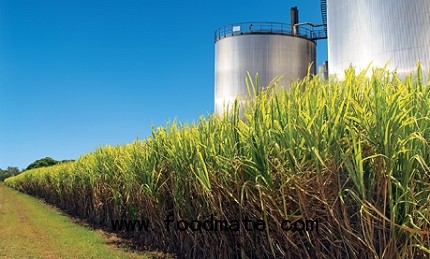
Sudan-based White Nile Sugar Company's new factory is located in Abu Hibera, Central Sudan. The White Nile Sugar Project (WNSP) is the largest agro-industrial investment in the region and has national importance. The $1bn factory was completed in May 2012 and opened in July 2012.
Sudan has an annual sugar consumption rate of about 1.2 million tons (mt), while its production is 800,000t. The project will meet the growing sugar demand in the country and also attain self-sufficiency by 2013.
Kenana Sugar Company owns 30% of the White Nile Company, while the remaining stake is held by Egyptian investors and the Sudanese Government.
Capacity of the White Nile Sugar factory
The plant will have the capacity to process 4.5mt of sugarcane into 450,000t of white sugar. Initial capacity of the plant is expected to be 250,000t.
The project will also annually produce 48 million litres of ethanol using sugar cane as feedstock, 100,000t of animal feed and 25,000t of cash crops for export. The by-products will include animal feed, powder and ethanol. It will also produce other cash crops for export.
When the new factory reaches its full capacity, the additional production will be exported to European countries.
Site of the White Nile Sugar Project
WNSP is located about 168km from the capital city Khartoum on the east side of the White Nile River. It covers about 250,000 acres near Abu Hebera Village, White Nile State. The project area extends about 50km south of Al Kawa Town and as far north as the Khartoum-Rabak highway.
About 150,000 acres of land were allocated for cultivation of sugarcane. Another 15,000 acres will also be used for cultivating cash crops.
Plant design
The sugar factory includes 520t steam/hr boilers, 104MW turbo generators, 24,000t/day crushing capacity mills, a 450,000t/yr production capacity sugar process house and other associated utilities and equipment.
The 104MW power generated from the steam boilers serves the sugar factory, the irrigational projects as well as the residences at the factory site. Excess power is supplied to the national grid.
The White Nile Sugar factory is designed to produce 15t of cattle and poultry feed an hour. Compound feeds are prepared by processing it with fattening formulae to meet the nationwide requirements of the products. It is expected to meet the rated capacity of 500,000t in six years of operations.
The factory is expected to have the potential to generate about 3.3% of the total annual sugar sales in carbon credits. The CO2 will be used for producing electricity through co-generation process thereby reducing greenhouse gas emissions.
Projects
A layout plan was developed to irrigate the cane plantation on 130,000 acres as part of the WSNP. It reduces the capital and operational costs of the cane processing factory.
About 5,000 acres of land around WSNP, used for agricultural development, act as a protective belt. The other projects include road, rail and utilities infrastructure, warehouses, workshops, township and hospital.
The ethanol plants at the factory use sugarcane as feedstock and produce 600,000l per day. The ethanol produced will meet European Standards. The by-products will include vinasse, CO2 and other fuels.
Funding of the WNSP
The project is funded by the Sudanese Government, the Arab Authority for Agricultural Investment and Development, Abu Dhabi Development Fund, Saudi Development Fund, the Central Bank, Kenana Sugar Company, Bank of Khartoum and other local banks.
In 2007 OPEC Fund for International Development (OFID) committed to provide $25m for the project. In October 2009, the project received an additional $104m from the Arab Fund for Economic and Social Development and the government. In October 2010, the project also received €41m loan from the Islamic Development Bank (IDB) Jeddah.
Contractors
The planning, preparation, design and development of WSNP took one year. Kenana Sugar Company was the consultant for the project and Sofreco was the sub consultant. The contractor for the four boilers of steam generation and accessories was ISGEC John Thompson of India (contract value - €48m).
Contractor for steam turbo generators (STG) and two cane milling plants was Uttam Group. The sugar process house was erected and commissioned by Ekon and F. C. Schaffer & Associates joint venture. Bundaberg Walkers Engineering was awarded a $25m contract for sugar mill machinery.
The 11kV overhead transmission lines were installed by Shirian Elshimal Engineering. In 2010, China CAMC Engineering was contracted to build the ethanol and the animal feed plants.





